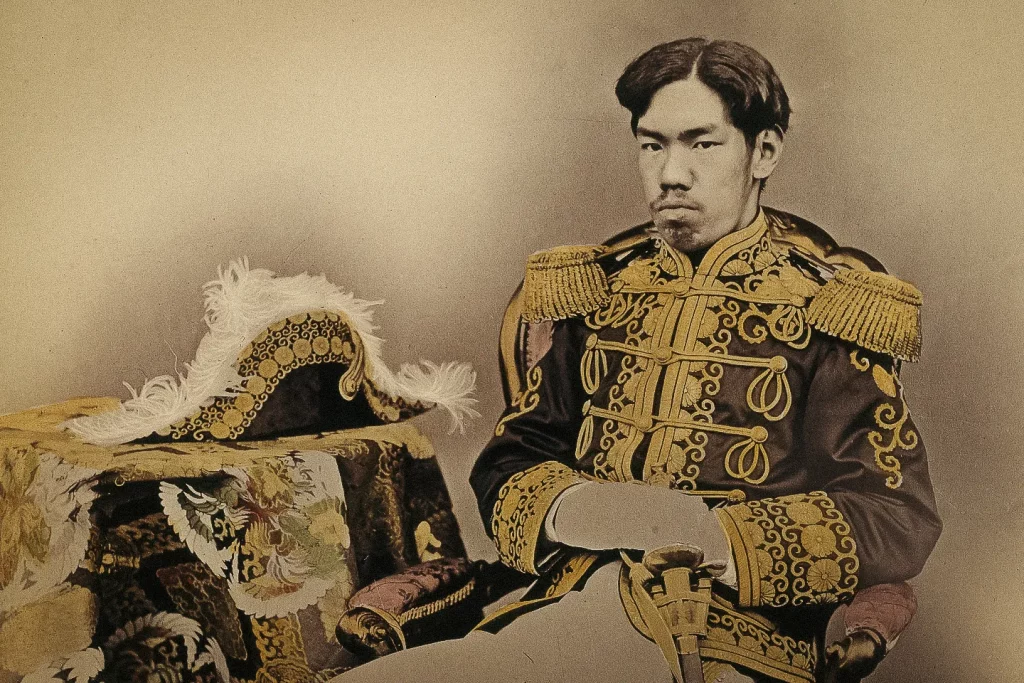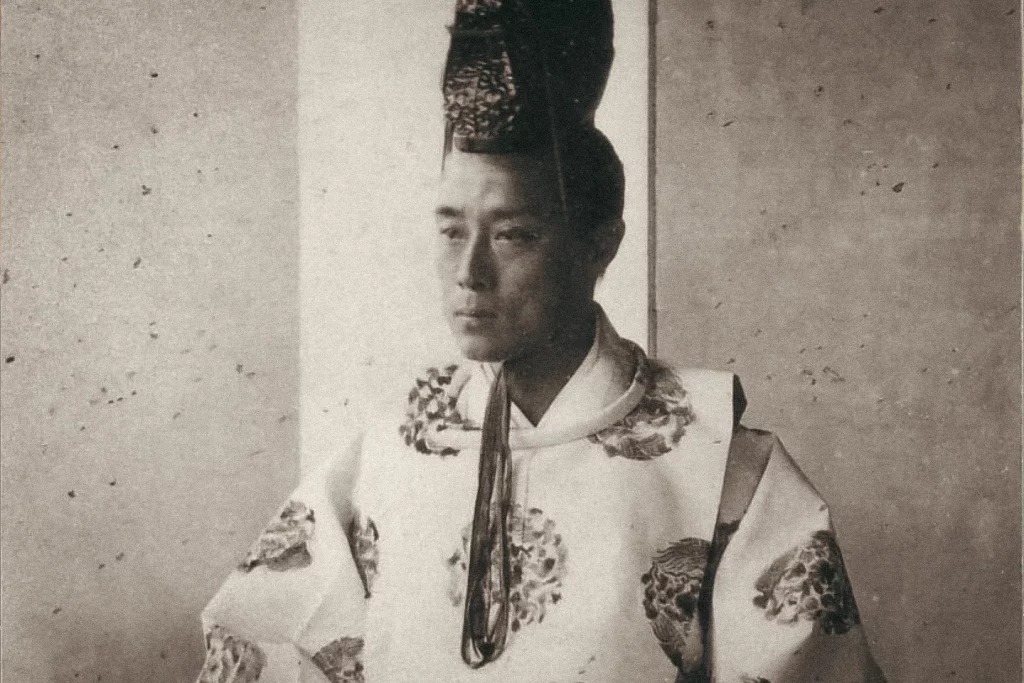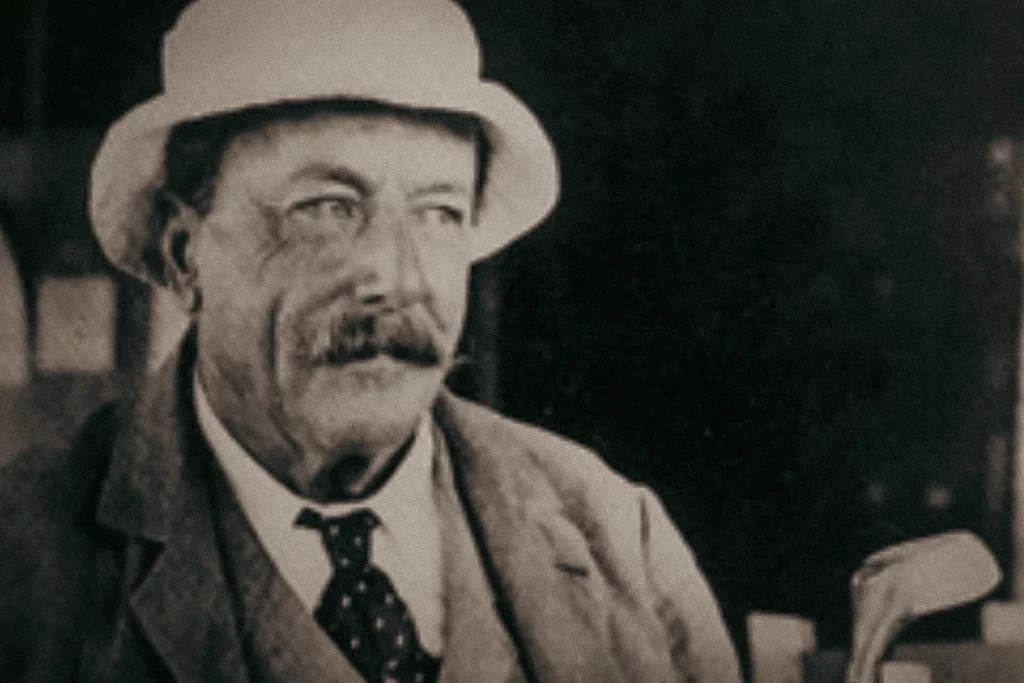The History of Japanese Golf
日本のゴルフの歴史


The history of golf in Japan is a tumultuous tale steeped in revolution and stained with the blood of its past. This narrative is intertwined with Japanese aesthetics and philosophical principles, which continue to leave their mark on our products even today.
The origins of golf in Japan can be traced back to the enthronement of Mutsuhito, now posthumously known as Tenno Meiji (Emperor Meiji). In the traditional Japanese governance structure, there were always two figures of paramount authority: the Emperor, the de facto highest office of state, and the Shōgun, known as “Sei-i-Taishōgun” in Japanese, the “Commander against the Barbarians.”
Historically, the Shōgun held the reins of the armed forces, typically acting in a subservient capacity to the Emperor. However, a transformative shift occurred in 1549 when the legendary Tokugawa Ieyasu assumed power, marking the rise of the Tokugawa Shogunate. Under their rule, the Emperor’s role became predominantly symbolic, as the Shōgun wielded substantial influence and authority.
For nearly seven centuries, Japan remained secluded from the outside world, its shores rarely touched by foreign trade. Only a select few European merchants were granted the privilege of anchoring on the shores of a man-made island called Dejima, nestled within the bay of Nagasaki.
The Japanese, aware of their comparatively limited development and advancement in contrast to Western powers such as Britain, Germany, France, and the United States, harboured a deep sense of their own insularity.
In 1853, the course of Japan’s history took a dramatic turn when a formidable fleet of American war vessels (known as the “Black Ships”) entered the harbour of Edo, now known as Tokyo since 1868. The sheer magnitude and technological superiority of these foreign warships left no room for doubt – any attempt at military confrontation would be an exercise in futility.
Rather than persisting in the isolationist policies of the past, the year 1853 marked a pivotal moment when Japan chose a different path. They recognised that embracing business relationships, opening their ports, and taking the initiative in trade would pave the way for the nation’s future prosperity.
Thus led the way to the Meiji Restoration, a transformative endeavour with the twin objectives of modernising Japan while preserving its cherished Eastern traditions. At the helm of this monumental undertaking stood three formidable statesmen and Samurai, known as the “Three Great Nobles.” These visionary leaders would guide Japan into a new era, where the fusion of tradition and modernisation would reshape the nation’s destiny.


For the “Three Great Nobles,” it was abundantly clear that Japan’s entrenched feudalistic, retrogressive, and exceedingly conservative government stood as a formidable impediment to progress. Their grand vision pivoted on one main objective: to restore the Emperor to full power and consign the Shogunate system to the annals of history.
To bring this audacious plan to fruition, they needed to rally a vast assembly of Samurai, the noble knights of Japan, and Daimyō, the esteemed lords of the land, to join their cause and lay the foundation for a modernised Japan.
Among the Three Great Nobles, the most influential figure was Saigō Takamori, a luminary Samurai of the Edo Period. Saigō’s charismatic persuasion swayed numerous fellow Samurai and Daimyō to embrace this transformative endeavour.
On the 9th of November 1867, the official proclamation marked the end of the Tokugawa Shogunate, heralding a historic turning point in Japan’s history. Merely ten days later, Tokugawa Yoshinobu, the last Shōgun of Japan, relinquished his authority, placing his “prerogatives at the Emperor’s disposal.”
The decisive unification of power within the armed forces and the head of state was consummated on January 3rd, 1868. From this moment onward, the once-mighty Shogunate institution faded into the annals of history, leaving Samurai and Daimyō with a newfound purpose and a nation poised on the brink of profound transformation.
Samurai left without a feudal lord or a clear sense of purpose found themselves in a precarious position, often referred to as Rōnin in Japanese, which translates literally to “Wavemen.” These warriors, adrift without a cause to serve, faced an existential dilemma.
As the winds of change swept across Japan, a significant faction of Samurai and Daimyō, staunchly loyal to the Shōgun and the traditional feudal system, refused to accept the new order. In the closing days of January 1868, this simmering discontent erupted into the ferocious conflagration known as the Boshin War.
The Boshin War pitted two adversaries against each other: the Imperialistic army, aligned with the goal of restoring imperial authority, and the Shogunate forces, bolstered by steadfast Samurai loyal to their cause.
In a bid to fortify their military might, the Shogunate sought assistance from France, hoping for a victorious outcome that would secure Japan’s status as a dependent nation. This appeal to France encompassed not only weapons but also tactics, as they strove to strengthen their position in the conflict.
Conversely, the Imperial army received military support from an assembly of American, British, and Scottish delegates. One influential figure in this alliance was the Scottish merchant Thomas B. Glover, who orchestrated the importation of numerous warships and firearms from the United States to Japan. These firearms, while potent, were rendered obsolete due to the recently concluded Civil War in the United States.
As the Boshin War unfolded, the clash of traditionalism and modernization reverberated across Japan, and the outcome of this tumultuous struggle would shape the nation’s destiny in ways profound and enduring.


The end of the Shogunate era left a multitude of skilled sword smiths in Japan without employment. With no need for the forging of swords and the decline of Samurai training, these artisans faced an uncertain future.
Following the conclusion of the Boshin War at the end of 1968, numerous foreign delegates chose to make Japan their new home. Among them were Scottish and English expatriates who, inspired by their love for the sport, introduced golf to the Land of the Rising Sun. It was a fortuitous turn of events that coincided with the idle hands of the once-busy sword smiths. They transitioned their remarkable craftsmanship from the forging of swords to the crafting of golf clubs.
In 1868, a young British man named Arthur Hesketh Groom settled in Kobe, Japan. Arthur was the younger brother of Frank Groom, who was the Co-Owner and business partner of Thomas B. Glover.
Over the years, Arthur Groom dedicated himself to the conception and realisation of Japan’s very first golf course. This vision materialised in 1903 as the Mt. Rokko Golf Club in Kobe, marking a significant milestone in the introduction of golf to Japan.
Fast forward to the present day, and Japan boasts a staggering array of over 2,500 golf clubs, complemented by countless multi-storey driving ranges and indoor golf facilities. Golf has become a beloved and enduring pastime in the nation’s sporting landscape.
Thomas B. Glover and Arthur Groom, the pioneers who played an instrumental role in bringing golf to Japan, continued to reside in the country until their respective passings. Their enduring legacy is etched into the rich tapestry of Japan’s history and its love for the game of golf.
